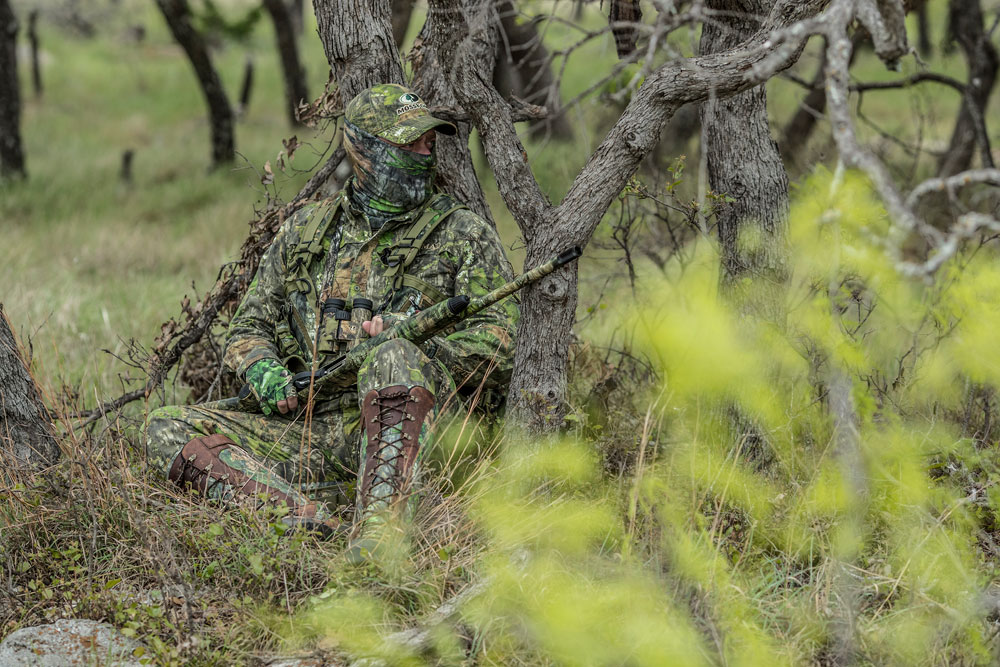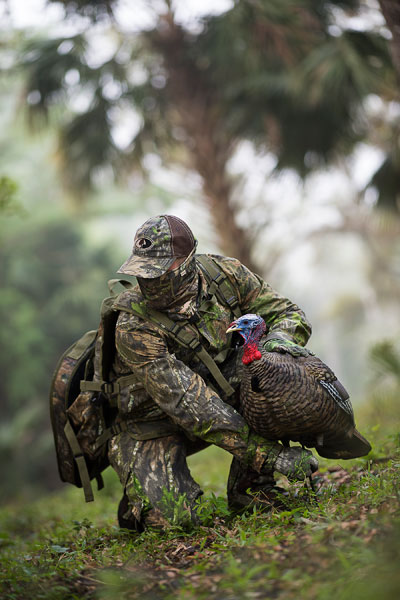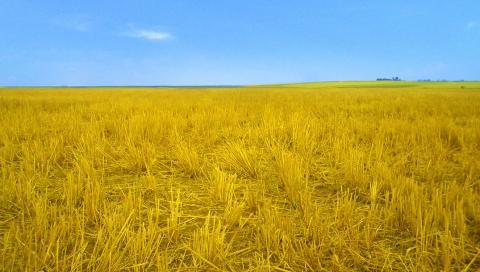Scott Ellis

During the heat of battle, a successful turkey hunter must analyze a multitude of situations with swiftness and then formulate a strategy to successfully harvest their feathered quarry. The foundation of this article is to unlock your own turkey-hunting analytical software, with all your previous triumphs as the hard drive. When you are on a hot gobbler, instead of merely employing the basic set up and call routine, take the time to factor in as many variables as possible before you begin your engagement with the bird.
The Rookie
Some hunters newer to turkey hunting are obviously not going to have as many success stories to reflect upon when they encounter a tough gobbler. A great tip for new hunters is to acquire pertinent biological and behavioral information, as well exhaust all your possible resources to gain data from a hunting standpoint. Probe the internet for articles about turkey hunting strategies, as well as search for articles that discuss the stages of the breeding cycle and a turkey’s daily routines in the spring. It will pay dividends as the different hunting situations unfold. Having a basic awareness before you start hunting these magnificent birds will aid you in your pursuit. The hunter needs enough basic information to design a plan and have other alternate strategies if the first is unsuccessful.
Consider your variables:
There are several factors determining how each hunting situation will unfold. Some of them to consider are: Which stage of the breeding cycle are you hunting in? Is the gobbler actively breeding hens? How much pressure have the birds received? What time of the day is it? Are the weather conditions a factor? Is there suitable cover to set up in? Which direction is he most likely to approach from? Does he have hens? How often is he gobbling? Are there any obstructions between you and him that you are aware of? Does he travel a certain route each day after he flies down?
The variables are endless. The principle is to take what you feel directly applies to your situation. You will then be able to deduce which plan of action will work in your favor. In as little time as possible, cycle the data that you’ve accumulated and formulate a feasible strategy. Then initiate the hunt with your bird.
Analyzing the information given:
 Once you’ve identified which type of scenario you’re involved in, you can then make the decision of how to execute your plan. Always remember that old adage there are no absolutes in turkey hunting. Finding a starting point is the key to success. Recollect hunts from prior seasons and recall what tactic led to the majority of your success for that particular situation. This should be your first angle of attack. If what worked before does not work on this particular gobbler, then employ the next of many back up strategies. Use what was second most successful and then third most and continue on until you’ve exhausted you play book. It may require some other than ordinary tactics. Whatever you decide, think it out thoroughly and commit to your strategy. Whether the hunt was successful or a bust, apply that information to your library of past personal experiences and have that knowledge to recall for future hunts. I would even recommend keeping a daily log of each hunt during turkey season. You would be amazed how much you will have forgotten about a particular turkey or hunt and how it refreshes your memory to tactics you have long since abandoned.
Once you’ve identified which type of scenario you’re involved in, you can then make the decision of how to execute your plan. Always remember that old adage there are no absolutes in turkey hunting. Finding a starting point is the key to success. Recollect hunts from prior seasons and recall what tactic led to the majority of your success for that particular situation. This should be your first angle of attack. If what worked before does not work on this particular gobbler, then employ the next of many back up strategies. Use what was second most successful and then third most and continue on until you’ve exhausted you play book. It may require some other than ordinary tactics. Whatever you decide, think it out thoroughly and commit to your strategy. Whether the hunt was successful or a bust, apply that information to your library of past personal experiences and have that knowledge to recall for future hunts. I would even recommend keeping a daily log of each hunt during turkey season. You would be amazed how much you will have forgotten about a particular turkey or hunt and how it refreshes your memory to tactics you have long since abandoned.
A great turkey hunter relies on his vast, self-contained encyclopedia of knowledge to consistently harvest turkeys. There will always be those kamikaze two-year-old gobblers that have a date with the grim reaper, but to bag toms year in and year out requires more than just luck and hot two-year-olds.
Think Outside the Box:
When matching wits with a tom during the spring, remember one thing, a wild turkey is at best, half as intelligent as we make them out to be. The truth is they appear to be so smart because they have uncanny senses and the fact that they have had attempts on their lives since their inception. Their will to survive is strong. Their level of cautiousness is neverending. Mother Nature has equipped them with bionic-like ability and it definitely aids in their survival. You do not have to be a rocket scientist or a competition level caller to consistently harvest them, but it does require a three-dimensional thought process.
Bear in mind that you may acquire beneficial knowledge as the hunt is transpiring. Halfway through the hunt you may come to the realization that he has hens or there was an obstacle halting his advancement. You have to be able to adjust your tactics as the hunt is unfolding. It’s almost as if your strategy evolves during the course of the hunt. Examine every possible angle and methods to counter the gobbler’s inadvertent efforts to outsmart you.
The Final Verdict
It may seem that the gobbler’s propensity to outsmart you surpasses the ability to harvest him, but remember that old bird isn’t put here to ridicule you. He is only doing what Mother Nature intended him to do during the spring. Gobble, strut and breed hens. It is futile to read anymore into it than that. In the end, remember to exhaust all your possibilities. You never know what last ditch effort may seal the deal. Ultimately, we all love hunting this majestic game bird. Whether success to you is actually harvesting a tom or merely a great day in the field, there is no greater sense of accomplishment than when a plan comes together.




























